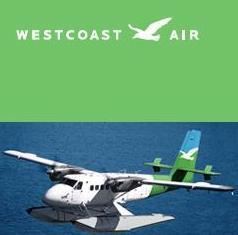8O YWZ Parent company Harbour Air Seaplanes Founded 1989 Destinations 7 | YWZ COAST AIR Headquarters Vancouver, Canada Fleet size 3 Parent organization Harbour Air Seaplanes | |
 | ||
Secondary hubs Vancouver Int'l Aerodrome
Victoria Inner Harbour Airport
Nanaimo Harbour Aerodrome Website Westcoast Air Harbour Air Hubs Vancouver Harbour Flight Centre | ||
West Coast Air is a Canadian scheduled airline which is a part of Harbour Air Seaplanes, operating de Havilland Canada DHC-6 Twin Otter float planes for Harbour Air painted in Harbour Air Aircraft livery.
Contents
The company offers scheduled flights from downtown Vancouver and the Richmond Floatplane base at Vancouver International Airport to Victoria, Nanaimo, Comox, the Sunshine Coast, and Whistler. The company also flies tours and private charters.
Harbour Air Seaplanes of Vancouver acquired West Coast Air and consolidated the two airlines' terminal and services on March 31, 2010.
Destinations
Destinations as of February 2010, operated for Harbour Air:
Fleet
As of June 2015 the West Coast Air fleet of aircraft has been integrated into Harbour Air and painted in Harbour Air Aircraft livery:
